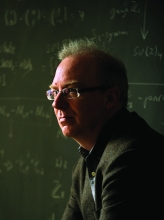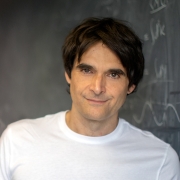A Physics Treasure Hidden in the Pattern of Wallpaper

An international team of scientists has discovered a new form of insulating material with a metallic surface that could enable more-efficient electronics, or even quantum computing. Their findings were facilitated by the development of a new method for analyzing existing chemical compounds that relies on the mathematical properties that govern the repeating patterns seen in everyday wallpaper.
The research, published in the journal Science, involved a collaboration among groups from the University of Pennsylvania, Princeton University, Sungkyunkwan University, Freie Universität Berlin, and the Max Planck Institute of Microstructure Physics.
The discovery of this phase in crystals of lead-strontium, completes a decade-long search for an elusive three-dimensional material that combines the unique electronic properties of two-dimensional graphene and three-dimensional topological insulators, a phase of matter discovered in 2005 in independent works by Penn physicist Charles Kane and Princeton’s B. Andrei Bernevig.
“You can think about a topological insulator like a Hershey’s Kiss,” says Kane, a corresponding author on the paper and the Christopher H. Browne Distinguished Professor of Physics. “The chocolate is the insulator, and the foil is a conductor. We’ve been trying to identify new classes of materials in which crystal symmetries protect the conducting surface. What we’ve done here is to identify the simplest kind of topological crystalline insulator.”
Click here to read the full story.





